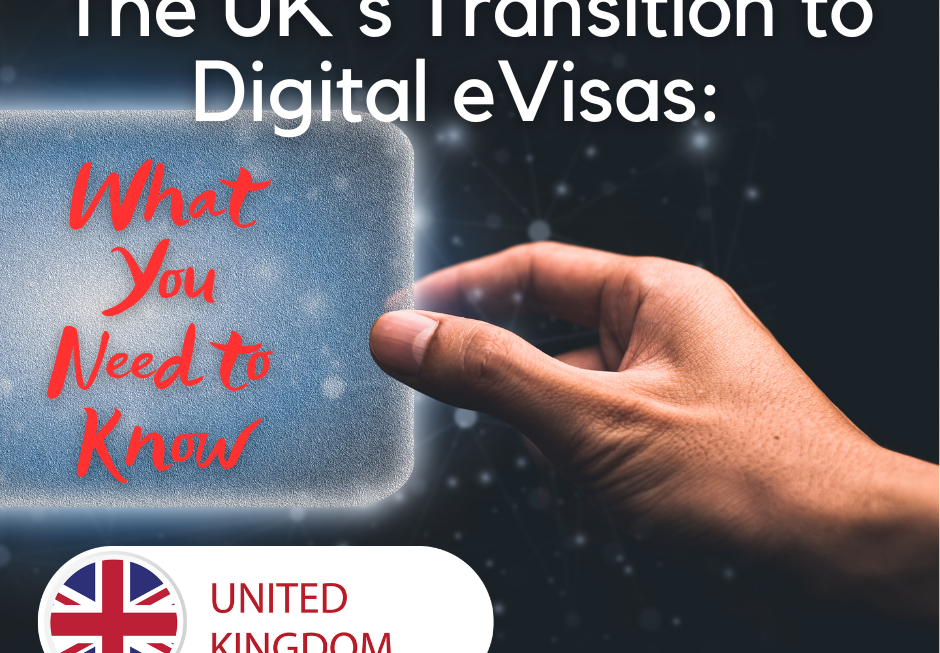As part of an ongoing effort to modernize its immigration system, the United Kingdom is transitioning from physical immigration documents to digital eVisas. This shift represents a significant change in how individuals will prove their right to live, work, or study in the UK. Here’s an overview of what this means for current visa holders and those planning to apply in the future.
The eVisa Rollout: A Digital Future
Starting from April 2024, the UK government began inviting visa holders to transition from physical documents, such as Biometric Residence Permits (BRPs) and Biometric Residence Cards (BRCs), to eVisas. This digital immigration status is accessible through an online UK Visas & Immigration (UKVI) account. By 2025, nearly all visa holders in the UK will have switched to this new system, with physical documents being largely phased out.
This move towards a fully digital system aligns with the government’s broader strategy to streamline and secure the UK’s immigration processes. The transition to eVisas is expected to reduce the risks associated with lost or stolen documents, shorten processing times, and simplify the process of proving immigration status to employers, landlords, and other third parties.
How eVisas Work
An eVisa is essentially an online record of your immigration status in the UK. Once you have created a UKVI account, you can access your eVisa, which will detail your permission to stay in the country and any conditions attached to it. This digital status can be easily shared with others, such as employers or landlords, by generating a share code through the UKVI online service.
For those already in the UK with a BRP that expires on December 31, 2024, or other forms of physical documentation, it’s essential to set up a UKVI account before this date to ensure continued proof of your immigration status. The Home Office has been contacting eligible individuals to guide them through this process, and further instructions are available on the UK government website.
Impact on Employers and Third-Party Checks
The introduction of eVisas also changes how employers, landlords, and other third parties verify immigration status. They will need to rely on the digital share codes provided by individuals, rather than inspecting physical documents. This change is designed to make the verification process quicker and more secure, although some physical documents will remain valid for certain purposes until the transition is complete.
Employers are encouraged to familiarize themselves with the new system, as the Home Office has provided resources and guidance to help communicate these changes to employees.
Next Steps for Visa Holders
If you currently hold a physical immigration document, it is crucial to keep informed about the latest guidance from the Home Office and to set up your UKVI account as soon as possible. The transition to eVisas does not alter your immigration status or the conditions of your stay in the UK; it simply changes the way you prove it.
In conclusion, the move to digital eVisas marks a significant step forward in the UK’s immigration system, offering enhanced security and efficiency. However, it also requires individuals and employers to adapt to new processes and ensure they are prepared for the full rollout by 2025.
For more detailed information, visit the official UK government websites or consult legal resources to stay updated on the latest developments in this transition.
UK Government Official eVisa Guidance: Online Immigration Status (eVisa)
UKVI Account Setup and Management: Get access to your eVisa




